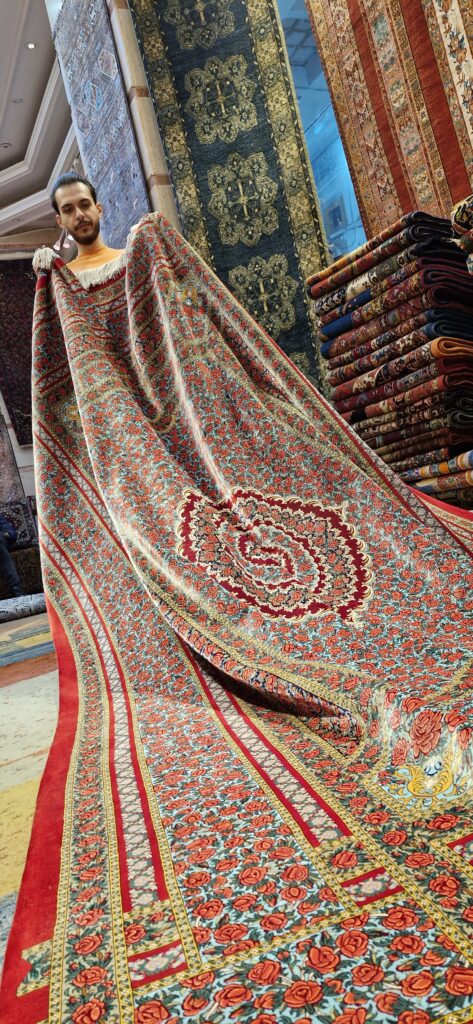
Persian handwoven carpets are among the oldest and most valuable handicrafts in the
world, with a history spanning thousands of years. This art is not only a symbol of Iranian
culture and civilization but has also garnered global admiration and continues to hold a
prestigious place in international markets. In this article, we explore the history of Persian
handwoven carpets from their origins to the present day and compare them with other
handwoven carpets worldwide.
Ancient Roots of Persian Carpets
Carpet weaving in Iran dates back thousands of years. Historical evidence suggests that
Iranians have been passionate about weaving since the Achaemenid era and even earlier.
The oldest known example of a Persian handwoven carpet is the Pazyryk Carpet,
discovered in the frozen tombs of Siberia and estimated to be around 2,500 years old.
This intricately woven carpet with symmetrical patterns demonstrates the advanced skills
of Persian artisans of that time.
The Golden Age of Persian Carpets During the Safavid Era
Although Persian carpets were valued during the Achaemenid and Sassanid periods and
even after the advent of Islam, the Safavid era (16th and 17th centuries) marked a
significant turning point in the history of this art. During this period, carpet weaving workshops were established in cities such as Isfahan, Tabriz, and Kashan, and Persian
carpet exports to Europe flourished. Shah Abbas I of the Safavid dynasty supported artisans
and expanded markets, significantly contributing to the industry’s growth. Carpets from this
era are renowned for their intricate designs, natural dyes, and symmetrical motifs.
Persian Carpets in the Qajar and Pahlavi Periods
During the Qajar era, Persian carpets maintained their fame, but economic struggles and
wars slightly affected their quality. However, during the Pahlavi era, Persian carpet
exports thrived once again, with major weaving companies established across various cities.
This period saw a surge in demand for Persian carpets in European and American markets.
Persian Carpets in the Modern Era
Today, Persian handwoven carpets remain one of the most valued handicrafts globally. Iran
continues to be one of the leading producers of handwoven carpets, with cities like
Kashan, Tabriz, Isfahan, Naein, Mashhad, Kerman, and Hamedan serving as major
carpet-making centers. Each of these regions boasts unique designs and techniques that
showcase the artistry of Iranian weavers.
In the modern world, the rise of technology and machine-made carpets poses challenges for
the handwoven carpet industry. However, the authenticity, superior quality, and artistic
craftsmanship of Persian carpets continue to set them apart, ensuring their lasting
significance.
How Persian Handwoven Carpets Differ from Other Handwoven Carpets
Persian carpets have always stood out in terms of quality, design, and authenticity. Here are
some key differences between Persian handwoven carpets and those from other countries:
A Persian handwoven carpet is not just a product; it is a cultural, historical, and artistic masterpiece that has been cherished for generations. From ancient times to the present
day, this art remains one of Iran’s most treasured heritages, maintaining its prestigious
status in global markets. Supporting this industry helps preserve its authenticity and
economic value.
If you are looking to purchase authentic, high-quality Persian handwoven carpets, visit
Soheil Carpet for an exquisite collection.

We are a family that considers our originality and pride in the production and supply of quality and beautiful handwoven carpets. We have been working in this profession for more than 50 years and have inherited our skills and experience from generation to generation. We have woven carpets inspired by Iranian nature, culture and art, each of which has its own design, color and meaning. We use the best raw materials and natural colors to produce our carpets and we care about the quality and accuracy of our work.